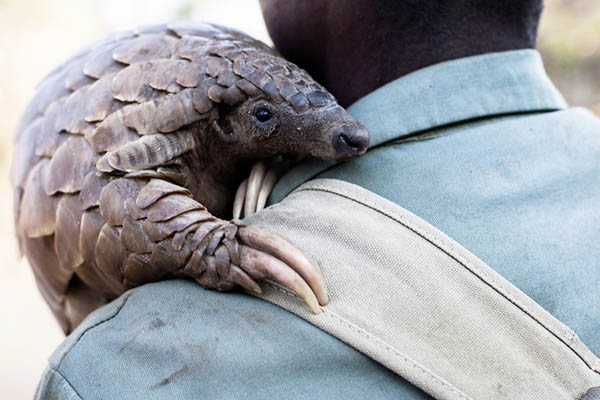
A pangolin in Zimbabwe. Jekesai Njikizana—AFP
New report says over 5,500 species are bought and sold on the global market, 50 percent more than previously believed
More than 5,500 species of birds, mammals, amphibians and reptiles are bought and sold on the worldwide animal market, a volume that is around 50 percent higher than earlier estimates, a study published in Science said on Thursday.
The legal and illegal trade of wildlife as pets or for animal products is a multi-billion-dollar industry, and recognized as one of the most severe threats to biodiversity. But the extent of the trade has remained poorly understood.
The research by scientists at the University of Florida and University of Sheffield found that threatened and endangered species were disproportionately represented. Overall, 5,579 of the 31,745 vertebrate species are traded, or 18 percent.
Among mammals, the figure rises to 27 percent, with the animals mainly used to produce products—for example pangolins, which are killed for their scales and for their meat.
Amphibians and reptiles are more often sold as exotic pets or to zoos, while 23 percent of bird species are traded, both as companion animals and for their use in medicine. There is a growing demand, for example, for the ivory-like casque of the helmeted hornbill, which has resulted in tens of thousands being traded since 2012.
The authors predicted that future trade, both legal and illegal, will add up to 3,196 more species to the list, mainly threatened or endangered, based on similarities with currently exploited species—for example, the African pangolin, which started to be exploited after Asian pangolins became harder to find. “Often, species are flagged for conservation only after a severe decline is documented,” they concluded.
